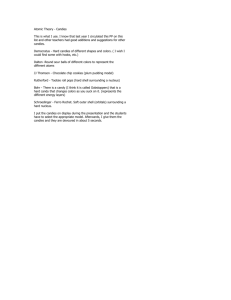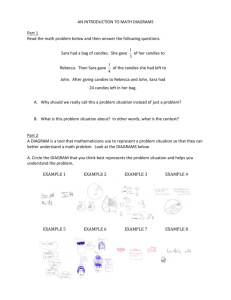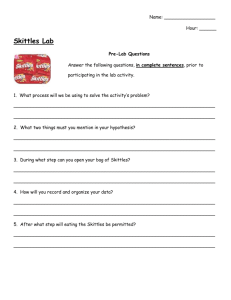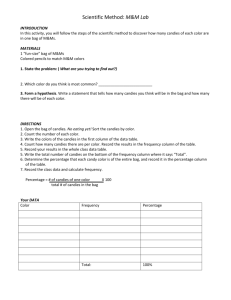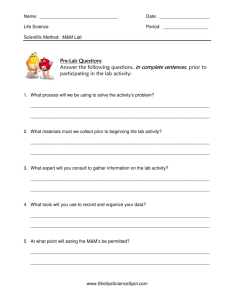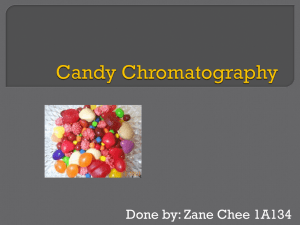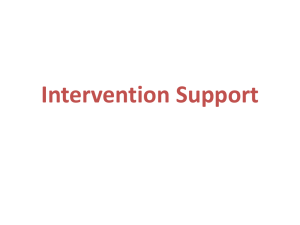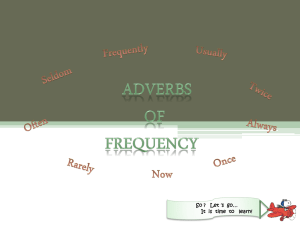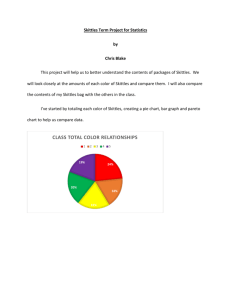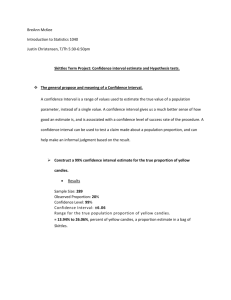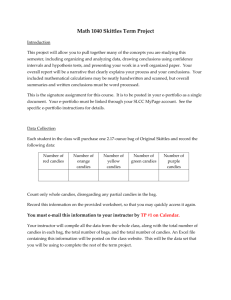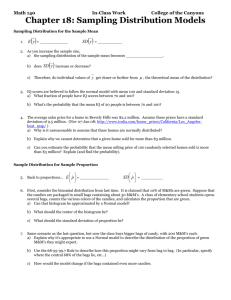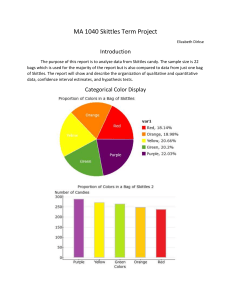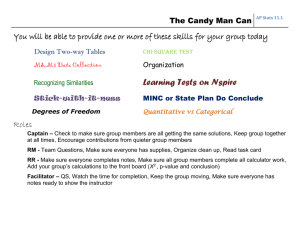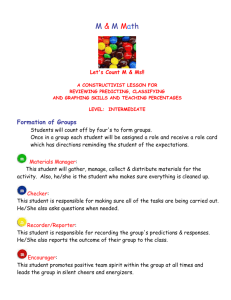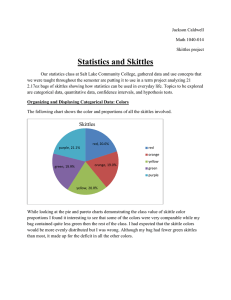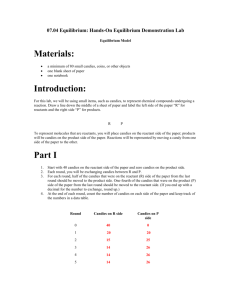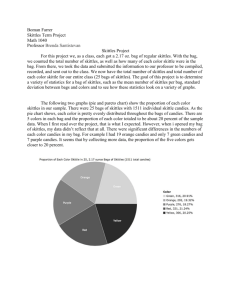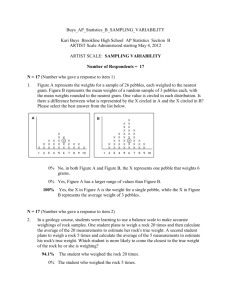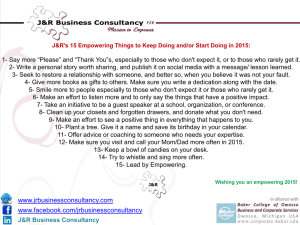Microsoft Word
advertisement
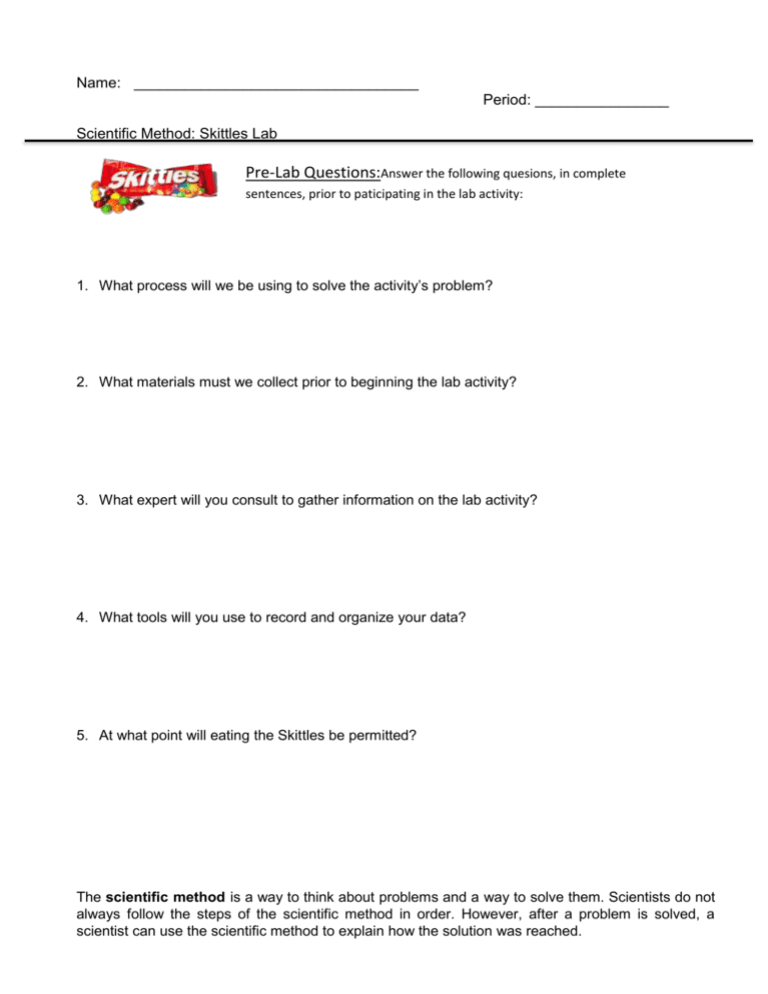
Name: __________________________________ Period: ________________ Scientific Method: Skittles Lab Pre-Lab Questions:Answer the following quesions, in complete sentences, prior to paticipating in the lab activity: 1. What process will we be using to solve the activity’s problem? 2. What materials must we collect prior to beginning the lab activity? 3. What expert will you consult to gather information on the lab activity? 4. What tools will you use to record and organize your data? 5. At what point will eating the Skittles be permitted? The scientific method is a way to think about problems and a way to solve them. Scientists do not always follow the steps of the scientific method in order. However, after a problem is solved, a scientist can use the scientific method to explain how the solution was reached. The scientific method can be broken down into the following parts: 1. 2. 3. 4. 5. 6. State the problem. Gather information on the topic. Form a hypothesis. Experiment! Record and analyze data. State a conclusion. INTRODUCTION In this activity, you will follow the steps of the scientific method to discover how many candies of each color are in one bag of M&Ms. It will show you how scientists record data on charts, make graphs, and draw conclusions. Do not eat any of the candies until you are permitted, because it will affect your results. Do not open the bag until you are instructed to do so. OBJECTIVES 1. Name and describe the steps of the scientific method. 2. Follow the steps of the scientific method to solve a problem. 3. Record data in a table or chart. 4. Construct a graph that shows the results of the investigation. MATERIALS 1 bag of Skittles Colored pencils to match Skittles colors Pencil DIRECTIONS 1. State the PROBLEM: (Hint – What are you trying to find out?) ____________________________________________________________________________ ____________________________________________________________________________ ____________________________________________________________________________ r 2. GATHER INFORMATION It is unlikely that you will find any information about colored candies in the library. Most likely, your best sources of information are experts, people who have experience with colored candies. Look around, and you will find some experts. In fact, you may be an expert yourself! What colors of candies are found in these bags? ____________________________________________________________________________ Which color do you think is most common? __________________________ 3. Form a HYPOTHESIS: Write a statement that tells how many candies you think will be in the bag and how many there will be of each color. Remember, the total number of candies must equal the sum of candies of each color. _______________________________________________________________________________ _______________________________________________________________________________ _______________________________________________________________________________ 4. EXPERIMENT: Open the bag of candies. No eating yet! Sort the candies by color. 5. RECORD & ANALYZE DATA: a. Write the colors of the candies in the first column of the data table. b. Count how many candies there are per color. Record the results in the frequency column of the table. c. Add the numbers in the frequency column, from the top line to the bottom. Write the total number of candies on the bottom of the frequency column where it says “Total”. d. Determine the percentage that each candy color is of the entire bag, and record it in the percentage column of the table. Percentage = # of candies of one color X 100 total # of candies in the bag Color Frequency (how many) Percentage Total: 100% USE DATA THAT YOU ENTERED TO MAKE A BAR GRAPH BELOW! i. ii. iii iv Label the horizontal axis with the colors of the candies. Label the vertical axis with the numbers from 1 to 12. Color the bars the same colors as the candies. Give your bar graph an appropriate title. Title: ________________________________________________________________ 6. Form a CONCLUSION: On the next page, form a paragraph that answers the problem you looked to solve in the Skittles lab. Your paragraph should include: • An answer to the question addressed in #1. • The total number of candies in your bag and how many there were of each color (frequency). • How your actual results compare with your hypothesis (was your hypothesis correct? If not, how close were you?) Concluding Paragraph _____________________________________________________________________________ _____________________________________________________________________________ _____________________________________________________________________________ _____________________________________________________________________________ _____________________________________________________________________________ _____________________________________________________________________________ _____________________________________________________________________________ _____________________________________________________________________________ _____________________________________________________________________________ _____________________________________________________________________________ _____________________________________________________________________________ STRETCh – even further 1. Use the following site to design a different type of chart with the data from the Skittles lab: http://nces.ed.gov/nceskids/ 2. Print out your new chart. 3. Compare the new chart to the bar graph you created. a. Which chart provides the best way to report the results? (To answer this question you will have to consider some of the following questions: Which chart allows me to visualize the differences in quantities reported? Which allows me to compare the numerical data easily? Which chart is more visually appealing? Which chart reports only the essential data?) 4. Once you have reflected on the two charts, write a brief letter to Ms. Kender defending the chart you like best. Include three reasons why the chart you chose should be the chart used for future Skittles Labs.
